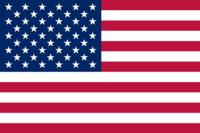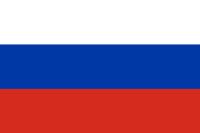
Briefing on the Economic Operation of China Coatings Industry in the First Half of 2025
Hz info2025-08-27 10:32
1 Overview of Production and Operation in the Coatings Industry
1.1 Overview of the Development of China Coatings Industry in the First Half of 2025
In the first half of 2025, influenced by various factors such as the macro environment, the decline in raw material prices, capacity expansion, and weak demand, the Chinese coatings industry faced a complex situation.
In terms of raw material prices, most have seen a certain degree of decline, which has played a positive role in boosting industry profits. Looking at specific industry segments, the deep adjustment in the real estate sector continues to impact the architectural coatings market, while the new energy sector, shipping, containers, and other fields are driving up demand for industrial coatings.
In terms of production capacity, despite the persistently sluggish downstream demand, the industry has witnessed a new wave of capacity expansion. In the first half of the year, over 20 contracted, commenced, and expanded projects for coatings and related materials have been disclosed nationwide, adding more than 3 million tons of new capacity and exceeding a total investment of 10 billion yuan. The product mix primarily consists of environmentally friendly and high-performance coatings, with over 70% of the projects focusing on waterborne coatings, high-solids coatings, and the like.
From the perspective of industry structure, leading enterprises consolidate their advantages through capacity expansion and mergers and acquisitions, and accelerate their transformation towards functionalization and intelligence. In terms of technological breakthroughs, the commercial application of new products such as zinc-free and phosphorus-free anti-rust pigments and self-cleaning coatings is accelerating. Furthermore, the application of technologies such as AI formula optimization and digital twins has reduced research and development cycles and production costs, leading to a continuous increase in the penetration rate of digital factories in the industry.
In terms of production, the domestic coatings output in the first half of 2025 amounted to 15.304 million tons, marking a year-on-year increase of 0.7%. The growth rate has noticeably decelerated compared to the same period last year, indicating that market demand has stabilized and the industry has bid farewell to the previous extensive growth model characterized by rapid expansion. (See Figure 1).
In terms of business revenue, the operating income for the first half of 2025 amounted to RMB 180.7 billion, representing a year-on-year increase of 4% (see Figure 2).
In terms of profitability, the total profit for the first half of 2025 amounted to RMB 11.71 billion, representing a year-on-year increase of 26.5% (see Figure 3).
1.2 Double Index Analysis of China Coatings Industry in the First Half of 2025
In the first half of 2025, the raw material procurement cost index of China's coatings industry was significantly lower than that of 2024 (see Figure 4), showing an overall downward trend; the finished product price index remained basically unchanged from 2024. This reflects the industry's achievements in cost control, product structure optimization, and value-added improvement.
2 Introduction to Import and Export of Coatings and Inorganic Pigments
2.1 Overall data on the import and export of coatings and inorganic pigments (see Tables 1 and 2)
2.2 Analysis of Import and Export Data in the Coatings Industry
Based on import and export data, the import and export of coatings in the first half of 2025 exhibited certain divergences. While the import volume decreased by 7.0% year-on-year, the import value increased by 8.5% year-on-year. This indicates that there is a rigid growth in high-end demand, but the dependence remains significant. Structural contradictions such as tariff adjustments and cost transmission, as well as the slow process of domestic substitution, still persist.
In terms of export performance, both export volume and export value have seen growth, primarily driven by factors such as domestic overcapacity forcing companies to expand overseas, market diversification and product upgrades, policy support, and industrial chain advantages.
2.3 Analysis of import and export data in the field of titanium dioxide
In terms of export performance, the export volume stood at 916,600 tons, marking a year-on-year decrease of 5.8%, while the export value amounted to $1.874 billion, representing a decline of 14.4% compared to the same period last year. The simultaneous drop in both volume and value indicates that the titanium dioxide industry is facing dual pressures from anti-dumping measures and sluggish demand. The core reasons can be attributed to three aspects:
Firstly, international trade barriers have intensified. Countries such as the European Union, India, and Brazil have imposed anti-dumping duties on Chinese titanium dioxide (e.g., India's tariff reaches 125%), directly undermining the price advantage and leading to a decrease in export volume.
Secondly, global demand is sluggish: downstream industries such as coatings and plastics are affected by the economic slowdown, resulting in weak demand growth. In the first half of 2025, domestic titanium dioxide prices fell by 11% year-on-year, and enterprises were forced to reduce prices for promotions to clear inventory.
Thirdly, there is a structural overcapacity in domestic production: the proportion of chlorination capacity has increased to 39%, but sulfuric acid capacity still dominates. Homogenization competition is fierce, and exports are mainly low-end and mid-range products.
In terms of imports, the volume stood at 39,700 tons, marking a year-on-year decrease of 15.5%, while the value amounted to USD 133 million, representing a 13.6% drop compared to the previous year. The decline in both volume and value indicates that the substitution of high-end products has begun to yield results. This change is reflected in three aspects:
Firstly, domestic substitution is accelerating. With breakthroughs in domestic chlorination technology (with a single-line production capacity of 100,000 tons per year), some mid-to-high-end products (such as titanium dioxide for automotive coatings) have achieved import substitution, resulting in a decline in imports for three consecutive years.
Secondly, there is still a high dependence on imports. In "bottleneck" areas such as cosmetic-grade and electronic ceramic nano-titanium dioxide, the average import price is as high as $3,329/ton, which is 1.6 times the average export price. The technological gap is difficult to bridge in the short term.
Third, cost and policy pressures. Domestic environmental protection policies (such as the "Titanium Dioxide Industry Carbon Emission Standards") eliminate backward production capacity, prompting enterprises to shift towards high-end products. However, the bottleneck of catalyst localization (30% shorter lifespan) restricts the release of production capacity.
3 Analysis of the Development Characteristics of China's Coatings Industry in the Past Year
Over the past year, China's coatings industry has exhibited notable characteristics in a complex market environment, including deepening structural adjustments, accelerating green transformation, and significant growth driven by the industrial sector.
First, market size: coexistence of total volume contraction and value enhancement.
Despite a year-on-year decline in total coatings production in 2024, the industry achieved counter-trend growth in main business revenue and total profit through optimizing its product mix. This phenomenon reflects the effectiveness of the industry's transformation from "scale expansion" to "value creation".
In addition, the production of industrial coatings related to new energy, robotics, petrochemicals, and other fields has maintained a medium to high growth rate, becoming an engine of industry growth and driving an increase in the total industry profits.
However, the year-on-year decline in newly started construction area in the real estate sector has dragged down the demand for architectural coatings. However, the shortened repainting cycle of existing houses, coupled with urban renewal policies, has stabilized niche markets such as interior latex coatings.
Secondly, policy-driven: environmental protection upgrades and intensified competition in international trade.
The continuous tightening of domestic environmental protection standards has forced an increase in the penetration rate of water-based coatings and high-solids coatings. Additionally, international green barriers have compelled transformation, such as the European Union's Carbon Border Adjustment Mechanism (CBAM), which has exerted pressure on titanium dioxide exports. Enterprises have reduced carbon emissions by substit-uting chlorination processes and using green electricity.
Third, raw material fluctuations: cost pressure and industrial chain game.
Affected by geopolitics and supply-demand mismatches, key raw material prices have experienced severe fluctuations. Furthermore, there is a divergence in the cost transmission capabilities among enterprises. For instance, leading enterprises alleviate pressure through vertical integration and large-scale procurement, while small and medium-sized enterprises (SMEs) suffer losses due to their weak bargaining power.
Fourth, downstream demand: industrial sector booming and construction sector under pressure.
Demand in the fields of new energy vehicles, wind power, and ships is robust, with structural growth in industrial demand. However, construction demand relies on the existing market, with repainting of existing houses (driven by second-hand housing transactions) and demand for improved residential housing in rural areas becoming the main support.
Fifth, competition landscape: top-tier concentration and accelerated mergers and acquisitions.
Leading enterprises expand their market share through mergers and acquisitions, while the living space of small and medium-sized enterprises is being squeezed. Especially in the low-end markets of construction coating and industrial protection, the competition is intensifying, and prices continue to decline.
Sixth, technological innovation: functional product and process breakthroughs.
Functional coatings (such as self-cleaning, fireproof, and extreme temperature resistant coatings) have a growth rate significantly higher than the industry average. At the same time, enterprises are improving production efficiency through digital transformation.
Seventh, regional market: the rise of the central and western regions and channel expansion.
The demand in East China and South China accounts for over 55%, but the central and western regions have become new growth poles due to their leading growth rate in infrastructure investment (such as Sichuan and Henan, with a growth rate of 8%). Some leading enterprises have covered the lower-tier markets through county-level specialty stores, and the demand for coatings in third- and fourth-tier cities is 4.3 percentage points higher than that in first- and second-tier cities.
In addition, the export structure of the coatings industry has been optimized. While the export volume of coatings has increased, the proportion of the European market has declined, with emerging markets such as Southeast Asia and the Middle East contributing the majority of the increase. Functional coatings (such as powder coatings and water-based industrial coatings) have become the main export force.
Eighth, challenges and responses: cost pressure and strategic adjustments.
In the short term, fluctuations in raw material prices, a sluggish real estate market, and international trade frictions (such as the EU's anti-dumping measures against titanium dioxide) remain major risks. Small and medium-sized enterprises (SMEs) need to cope with the dual pressures of rising costs and price wars.
From a long-term strategic perspective, leading enterprises build their competitive advantages through globalization, service-oriented transformation, and technological research and development (such as graphene coatings and intelligent color-changing coatings).
Over the past year, China's coatings industry has exhibited characteristics of industrial-driven growth, environmental protection reshaping the landscape, and accelerated consolidation among leading players. Despite facing the downturn in the real estate sector and cost pressures, the emergence of new sectors such as new energy and high-end manufacturing, coupled with policy-driven green transformation, has injected new momentum into the industry. Looking ahead, enterprises need to focus on functional product research and development, enhancing supply chain resilience, and expanding their global footprint to seize opportunities amid structural adjustments.
MORE HZinfo
- Heavy Bet on the Chinese Market! Jotun Plays Its "Key Move", Aims for 10-Billion-Yuan Output with World's Largest Base
- This base will consequently become Jotun Group's largest production base and a key R&D center globally.
-
2025-12-05
- Interior Latex Paint in Winter: A Guide to Avoiding Low Temperature and High Humidity
- Cold conditions can lead to poor film formation, cracking, peeling, and discoloration, severely compromising both the decorative finish and long-term durability.
-
2025-12-05
- Recommended products:JinZong Machinery Automated Coating Production Line
- Jinzong automaic paint complete production line equipment adopts automatic and inteligent production process, which is mainly completed by computeroperation from feeding to discharging.
-
2025-12-05


 English
English 简体中文
简体中文 Русский
Русский إنجليزي
إنجليزي